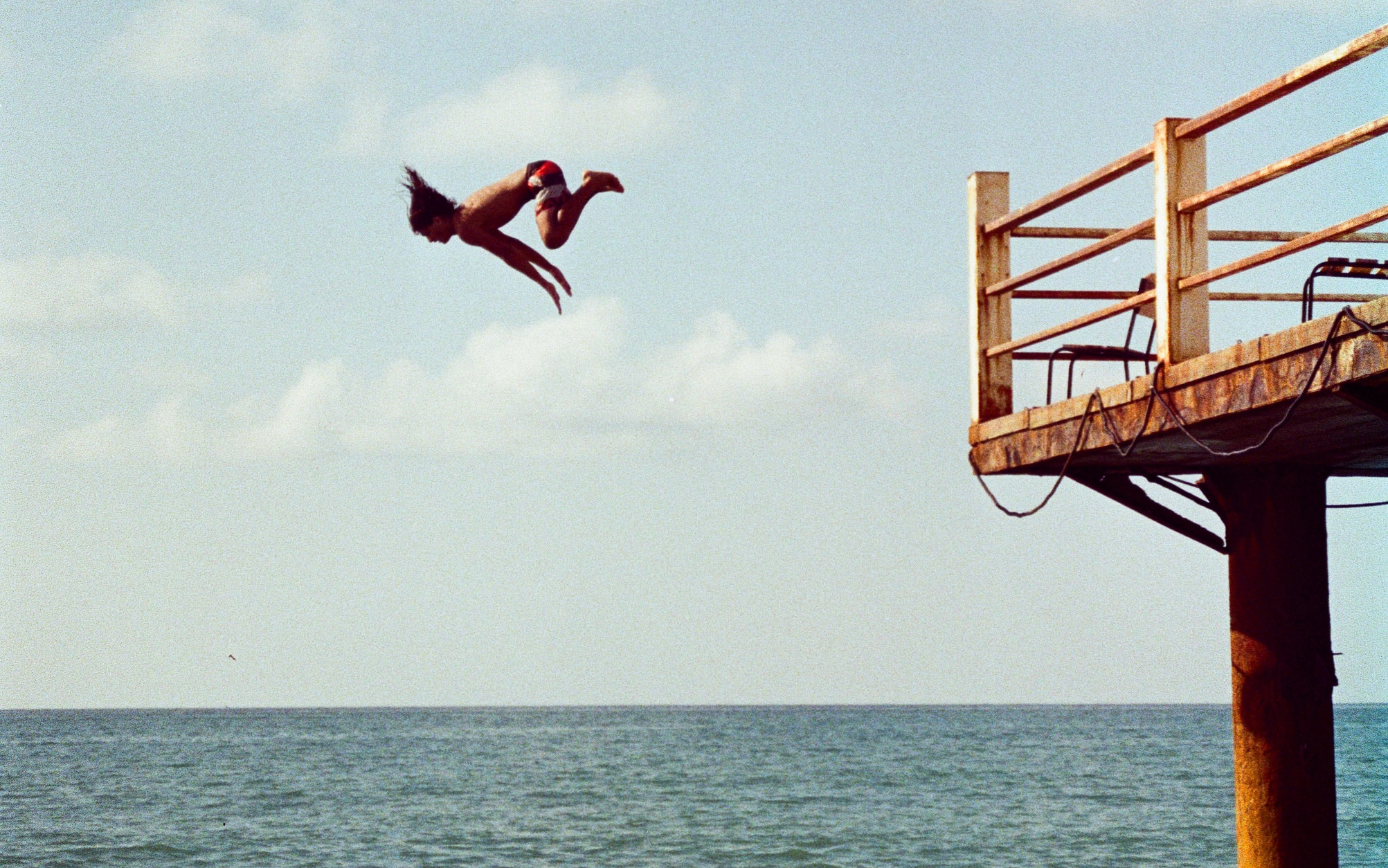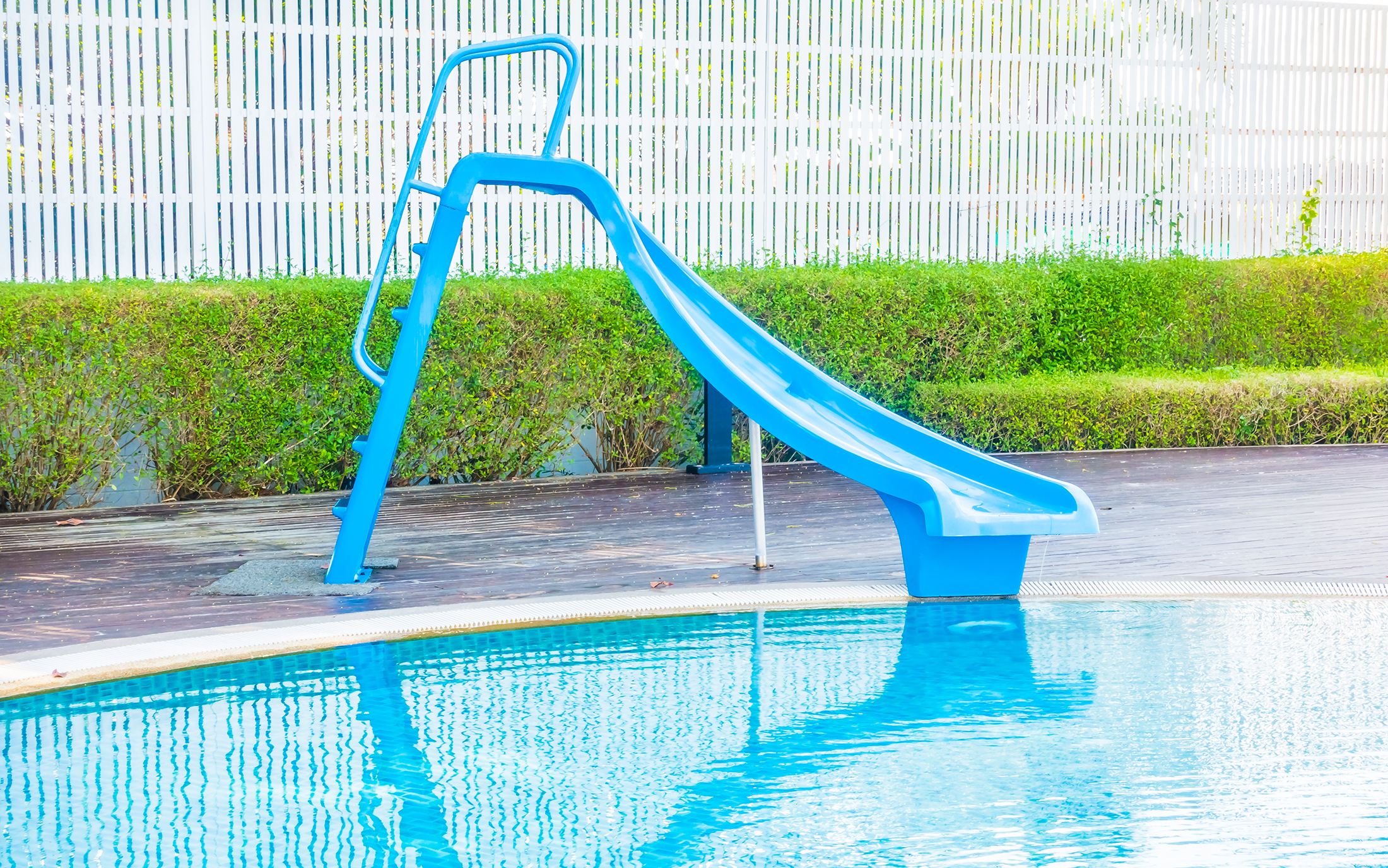Know How to Stay Safe Before Using Diving Boards and Pool Slides
22nd Jun 2023
Kids love to play in the water. Swimming is one of the most common physical activities among American children and there are many ways to enjoy a swim in the summer.
You may be a pool owner or know someone with a swimming pool. Maybe you visit a community pool regularly or your kids attend a summer camp with a pond or pool. You can swim while vacationing on cruise ships, at hotels and amusement parks. In all of these cases, you may encounter swimming pool diving boards, pool slides and other novel water features that you’re eager to try out.
Diving Dangers
Backyard swimming pools with diving boards aren’t as common as they used to be. Communities have strict codes regarding pool size and depth and many backyard pools don’t meet those requirements. In addition, some homeowner's insurance policies won’t cover them.
Part of that reason is because a significant number of people, especially children, are injured using diving boards each year. Injuries tend to range from cuts and bruises to facial, head and neck injuries.

The American Academy of Pediatrics (AAP) notes that, from 2008-2020, children aged 10-14 accounted for 42% of diving board injuries and adolescents aged 15-19 accounted for 38%. Boys received almost twice as many injuries as girls.
Healthy Children, the AAP website, notes that compared to competitive diving, “unsupervised or recreational diving is associated with a far greater risk of serious injury or even death.”
On a positive note, the average number of yearly diving-related injuries has fallen by nearly 600 injuries per year since the 2012 adoption of international safety standards for swimming pool design and operation.
Diving Safety
These statistics underscore the importance of following safety rules for diving and diving board use.
If you install a diving board on a new or existing residential pool, make sure both the pool and diving board meet all manufacturer installation standards, plus state and local codes.
Wherever you encounter a pool diving board, remember these practical tips on safe recreational diving.
- Know the depth of the water. Before diving, jump in feet first to learn the depth and the shape of the pool bottom.
- Never dive into water that is not clear, where obstructions may not be visible.
- When using a diving board, bounce just once and jump away from the board.
- Never dive in shallow water or into any above-ground pool.
- Don’t dive off the side of the diving board or the sides of the pool.
- Don’t run and dive or try fancy dives.
- Make sure the diving area is clear of objects and people.
- Only one person on the diving board at a time.
- Never swim under a diving board.
- Don’t remain in the splashdown area when someone else is diving.

Pool Slide Safety
Pool slides have replaced diving boards in popularity, but they carry their own potential risks. Every summer, emergency rooms treat pool water slide injuries ranging from sprains and bruises to broken bones and head injuries.
If you install an inground pool slide, make sure it meets Consumer Product Safety Commission standards. Handrails and steps should have non-slip materials. Be sure to buy the proper height pool slide for your pool water depth. Check the pool slide regularly for loose bolts, instability, poor lubrication and general wear and tear.
Pool water slides are especially common at water parks, where their height and twisty turns make them a main attraction. When visiting a park with waterslides, follow any safety rules that are posted.
Here are some safety guidelines to follow when using a pool slide or water park slide.
- Only one person goes down the slide at a time; do not form chains.
- No roughhousing on or near the waterslide.
- Slide down seated or feet first, never head first.
- Be sure there are no objects or people at the slide’s exit.
- To avoid collisions with the next swimmer, do not block the end of the slide.
- Do not wear clothes with exposed zippers, buckles or rivets down the slide.
- Remove eyeglasses or secure them with head straps.
- Do not slide down your backyard pool slide using a pool float, inner tube or other flotation device.
Diving boards and pool slides can be great accessories that enhance your swimming experience.
Wherever you swim, follow common sense and posted swimming pool rules. And if your children beg to use the water slide or diving board, know how to enjoy these attractions while staying safe.
You may also like:
5 Tips for Pool Safety
School’s Out, Swimming in In: 10 Important Pool Rules for Kids
SHOP POOL ACCESSORIES
SHOP POOL FLOATS
SHOP POOL CHEMICALS
SHOP POOL SAFETY
